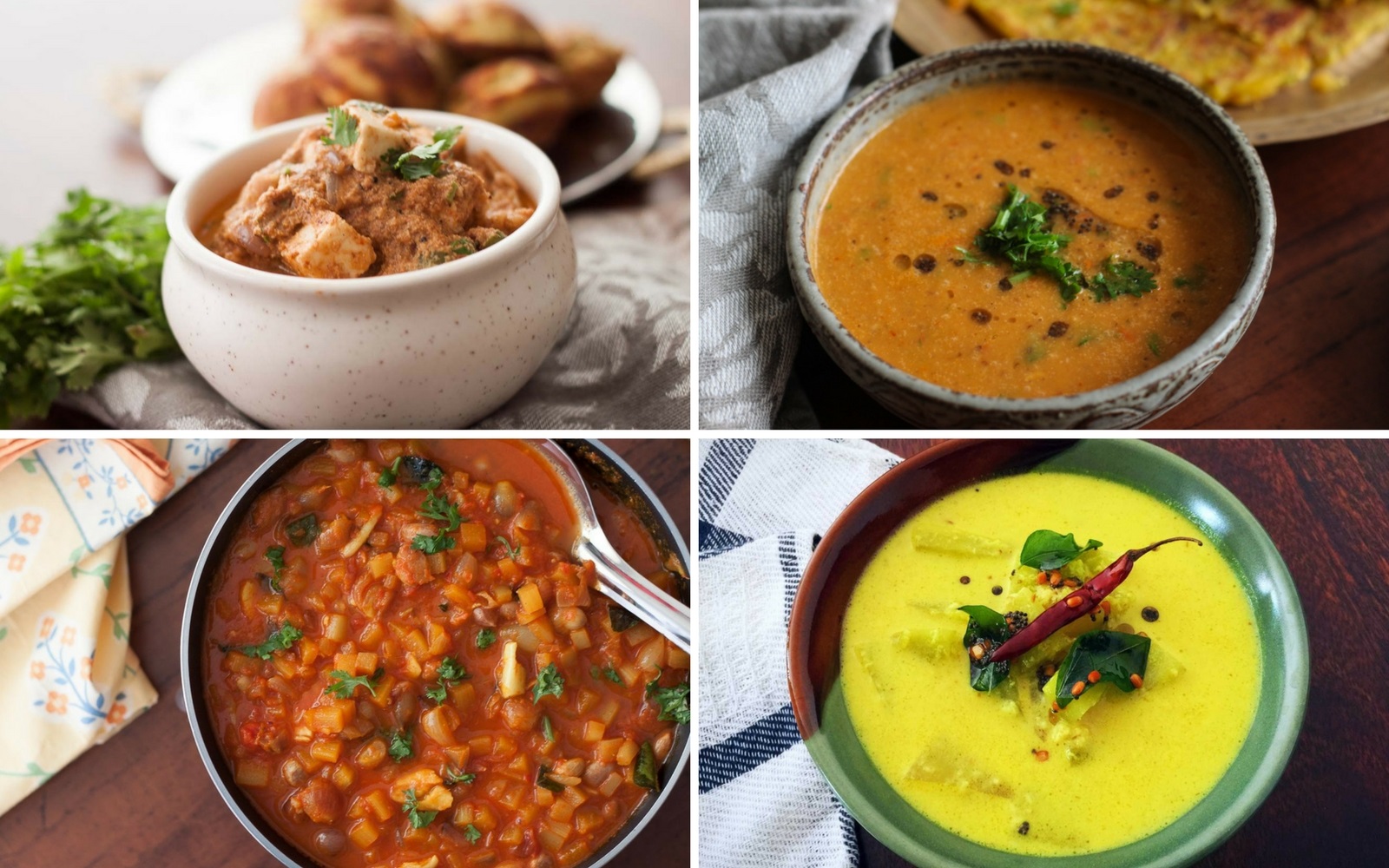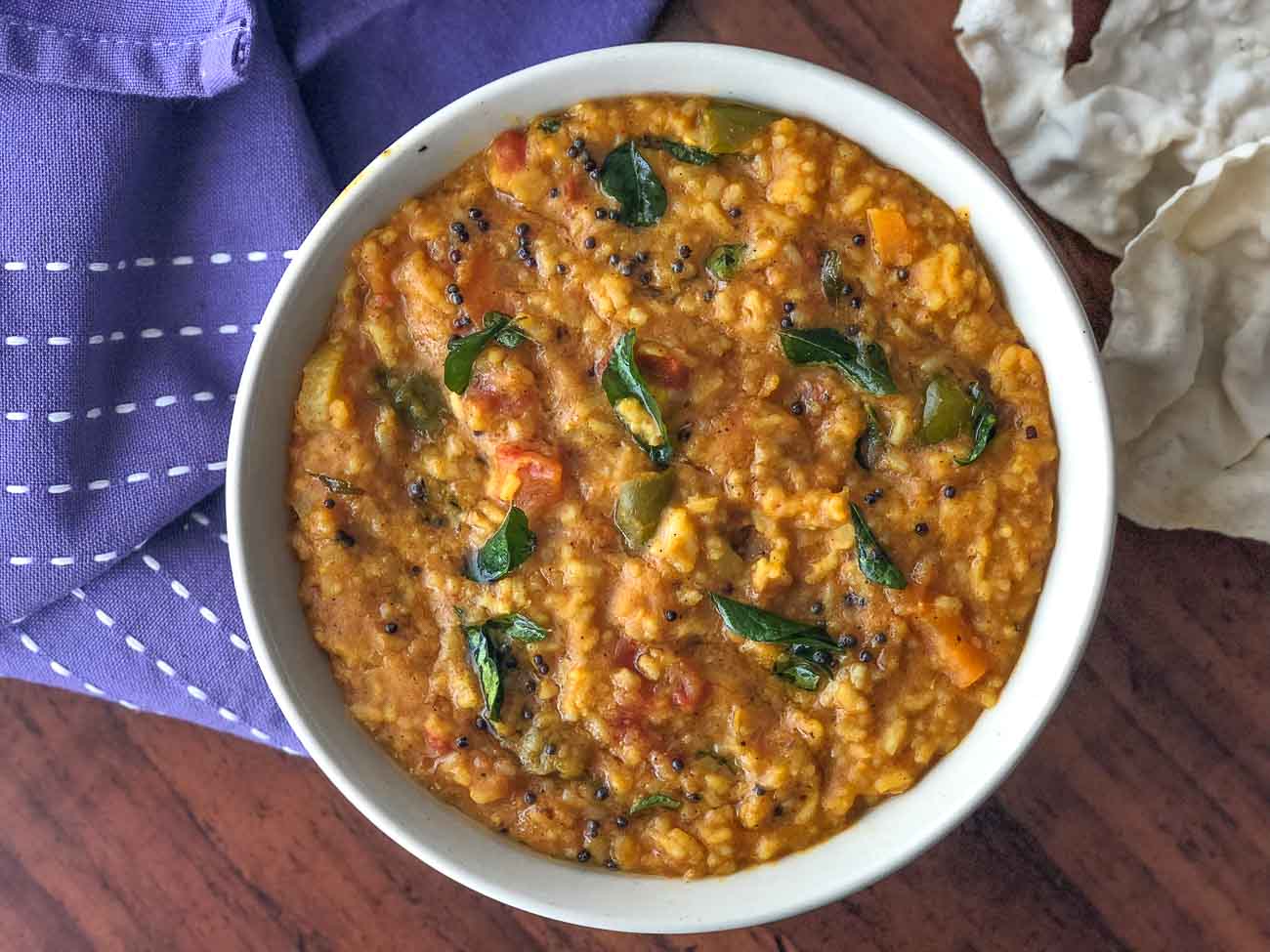South Indian vegetarian cuisine is a vibrant tapestry of flavors, aromas, and traditions that has captivated the world. Rooted in ancient culinary wisdom, these dishes are not only delicious but also nourish the body and soul. Embark on a culinary journey as we delve into the unique flavors and ingredients that define this extraordinary cuisine.
From the humble idli to the aromatic sambar, South Indian vegetarian dishes are a symphony of textures, spices, and wholesome ingredients. Whether you’re a seasoned connoisseur or a curious explorer, this comprehensive guide will provide you with a deep understanding and appreciation for the culinary wonders of South India.
South Indian Vegetarian Recipes: An Introduction

South Indian vegetarian cuisine holds a significant place in Indian culinary traditions. Rooted in the diverse cultures and geographical influences of the southern states of India, it showcases a vibrant array of flavors, spices, and cooking techniques.South Indian vegetarian cooking is characterized by its use of fresh, local ingredients, such as coconut, lentils, vegetables, and spices.
These ingredients are combined to create dishes that are both flavorful and nutritious.
Unique Flavors and Ingredients
The distinct flavors of South Indian vegetarian cuisine come from a combination of spices, herbs, and souring agents. Commonly used spices include cumin, coriander, turmeric, fenugreek, and mustard seeds. Herbs such as curry leaves, cilantro, and mint add a fresh, aromatic touch to the dishes.
Souring agents like tamarind, lemon juice, and yogurt provide a tangy balance to the rich flavors.
Popular South Indian Vegetarian Dishes
South Indian cuisine is renowned for its diverse range of vegetarian dishes, each bursting with unique flavors and textures. From the fluffy idlis to the crispy dosas, these culinary creations have gained immense popularity worldwide.
This section will delve into some of the most beloved South Indian vegetarian dishes, showcasing their distinct characteristics and the reasons behind their enduring appeal.
Idli
- Steamed rice and lentil cakes, soft and spongy with a slightly sour flavor.
- Often served with sambar and coconut chutney, making it a complete and satisfying meal.
- A staple breakfast dish in South India, enjoyed by people of all ages.
Dosa
- Thin, crispy pancakes made from a fermented batter of rice and lentils.
- Versatile dish that can be filled with various ingredients, such as potatoes, onions, and paneer.
- A popular street food and a staple dish in South Indian homes.
Vada
- Fried lentil dumplings, crispy on the outside and soft on the inside.
- Often served as an accompaniment to sambar or rasam, adding a crunchy texture to the meal.
- A popular snack or breakfast item, enjoyed with chutney or sambhar.
Pongal
- A sweet or savory dish made from rice, lentils, and spices.
- Traditionally cooked during festivals and special occasions, symbolizing prosperity and abundance.
- Can be prepared in various ways, with different regions having their unique variations.
Sambar
- A lentil-based stew with a tangy and spicy flavor.
- Often served with idli, dosa, or rice, adding a flavorful accompaniment to the meal.
- A staple dish in South Indian homes, enjoyed for its comforting and hearty taste.
Ingredients and Techniques

South Indian vegetarian cuisine is known for its distinct flavors and use of fresh ingredients. Some of the essential ingredients used in these recipes include:
- Lentils: Lentils are a staple in South Indian vegetarian cooking, providing protein and fiber. They are used in a variety of dishes, such as sambar, rasam, and dal.
- Rice: Rice is another staple ingredient, used in both savory and sweet dishes. It is often served with sambar, rasam, or other curries.
- Coconut: Coconut is used in both fresh and dried forms in South Indian vegetarian cooking. It adds a rich, creamy flavor to dishes such as curries, chutneys, and desserts.
- Spices: Spices play a vital role in South Indian vegetarian cooking, adding flavor and depth to dishes. Common spices include cumin, coriander, turmeric, chili powder, and garam masala.
In addition to these essential ingredients, South Indian vegetarian cooking also employs a variety of cooking techniques, including:
- Steaming: Steaming is a gentle cooking method that preserves the nutrients and flavors of vegetables. It is often used to cook vegetables such as cauliflower, broccoli, and carrots.
- Frying: Frying is a versatile cooking technique that can be used to create a variety of dishes, such as dosas, vadas, and pakoras. It involves cooking food in hot oil.
- Boiling: Boiling is a simple cooking method that is often used to cook lentils, rice, and vegetables. It involves cooking food in boiling water.
Health Benefits of South Indian Vegetarian Cuisine
South Indian vegetarian cuisine is renowned for its flavorful and diverse dishes. Beyond its culinary appeal, it also offers a wealth of nutritional benefits that contribute to a healthy diet.South Indian vegetarian dishes are rich in plant-based proteins, fiber, vitamins, and minerals.
Legumes, such as lentils and beans, provide a substantial amount of protein, iron, and fiber. Whole grains, like rice and millet, are excellent sources of fiber, carbohydrates, and essential vitamins. Vegetables, such as spinach, tomatoes, and okra, are packed with antioxidants, vitamins, and minerals.
Heart Health
The high fiber content in South Indian vegetarian dishes helps lower cholesterol levels and reduce the risk of heart disease. Soluble fiber, found in legumes and whole grains, binds to cholesterol in the digestive tract and prevents it from being absorbed into the bloodstream.
Weight Management
The high fiber and protein content in South Indian vegetarian dishes promotes satiety and helps control appetite. Fiber slows down digestion, making you feel fuller for longer periods. Protein also helps increase metabolism and reduce cravings.
Diabetes Management
The low glycemic index of South Indian vegetarian dishes makes them suitable for people with diabetes. Whole grains and legumes have a slow release of glucose into the bloodstream, preventing sudden spikes in blood sugar levels.
Gut Health
The fiber in South Indian vegetarian dishes supports a healthy gut microbiome. Fiber acts as a prebiotic, feeding beneficial bacteria in the gut. A healthy gut microbiome is associated with improved digestion, reduced inflammation, and boosted immunity.
Reduced Risk of Chronic Diseases
The antioxidants and anti-inflammatory compounds found in South Indian vegetarian dishes may help reduce the risk of chronic diseases, such as cancer and neurodegenerative disorders. Vegetables, fruits, and spices contain antioxidants that protect cells from damage.By incorporating South Indian vegetarian dishes into your diet, you can enjoy a flavorful and nutritious cuisine that supports your overall health and well-being.
Cultural Significance of South Indian Vegetarian Food
South Indian vegetarian food holds a profound cultural significance in the region. It is deeply intertwined with religious festivals, social gatherings, and family meals, reflecting the region’s rich culinary heritage and spiritual beliefs.
Religious Festivals
South Indian vegetarian cuisine plays a central role in various religious festivals. During festivals like Pongal, Ugadi, and Deepavali, special vegetarian dishes are prepared as offerings to deities and shared among family and friends. These dishes often symbolize prosperity, abundance, and the triumph of good over evil.
Social Gatherings
Vegetarian food is an integral part of social gatherings in South India. Weddings, birthdays, and community events often feature elaborate vegetarian feasts. These gatherings provide an opportunity for people to connect, share food, and celebrate their shared cultural identity.
Family Meals
In South Indian households, vegetarian meals are a daily staple. They are typically simple, yet nutritious and flavorful, and often include a variety of dishes such as rice, lentils, vegetables, and chutneys. These meals are a time for families to come together, bond, and pass on culinary traditions to younger generations.
Recipes and Variations
South Indian vegetarian cuisine boasts a diverse range of delectable dishes, each with its own unique flavor and preparation method. Here, we present a collection of authentic recipes and explore regional variations that add to the richness of this culinary tradition.
The recipes included below provide step-by-step instructions to guide you in recreating these beloved dishes in your own kitchen.
Idli Batter Recipe
Idli, a fluffy and savory steamed rice cake, is a staple of South Indian breakfasts. The batter for idli requires a combination of urad dal (black lentils) and parboiled rice, which are soaked and ground into a smooth paste. The fermentation process, which typically takes overnight, allows the batter to rise and develop its characteristic sour flavor.
Sambar Recipe
Sambar, a lentil-based stew, is a flavorful accompaniment to idli, dosa, and other South Indian dishes. It is made with a variety of lentils, vegetables, and spices, and is known for its tangy and spicy taste. The use of tamarind, jaggery, and a blend of spices creates a complex and harmonious flavor profile.
Coconut Chutney Recipe
Coconut chutney, a refreshing and versatile condiment, is a common accompaniment to South Indian vegetarian dishes. It is made with fresh coconut, green chilies, and a variety of spices. The chutney provides a cooling contrast to the spiciness of many South Indian dishes and adds a touch of sweetness and acidity.
Regional Variations
South Indian vegetarian cuisine exhibits regional variations that reflect the diverse cultures and geographical influences of the region. Here are some notable variations:
- Tamil Nadu: Known for its spicy and flavorful dishes, Tamil Nadu’s vegetarian cuisine features dishes like sambar, rasam, and a variety of chutneys.
- Karnataka: The cuisine of Karnataka is influenced by neighboring states and is known for its use of coconut and lentils. Dishes like benne dosa, akki roti, and holige are popular.
- Kerala: Kerala’s vegetarian cuisine is characterized by its use of coconut milk and spices. Dishes like appam, puttu, and aviyal are well-known.
- Andhra Pradesh: The vegetarian cuisine of Andhra Pradesh is known for its spicy and tangy flavors. Dishes like gongura pachadi, uppudu pindi, and pulusu are popular.
- Telangana: Telangana’s vegetarian cuisine shares similarities with Andhra Pradesh’s cuisine but has its own distinct flavors. Dishes like bagara rice, mirchi ka salan, and garelu are notable.
These regional variations showcase the rich diversity of South Indian vegetarian cuisine, making it a culinary treasure that continues to delight and inspire.
Conclusion
Our exploration of South Indian vegetarian recipes has unveiled a world of culinary delights, steeped in tradition and bursting with flavor. These dishes not only tantalize the taste buds but also offer a glimpse into the rich cultural heritage of South India.
Whether you’re a vegetarian seeking inspiration or simply a foodie looking to expand your culinary horizons, South Indian vegetarian cuisine is an adventure waiting to be savored.
FAQ
What are the key ingredients used in South Indian vegetarian cooking?
Lentils, rice, coconut, and spices form the foundation of South Indian vegetarian dishes, providing a symphony of flavors and textures.
How is South Indian vegetarian cuisine typically prepared?
Steaming, frying, and boiling are common cooking techniques employed in South Indian vegetarian cooking, each method enhancing the unique characteristics of the ingredients.
What are some popular South Indian vegetarian dishes?
Idli, dosa, vada, pongal, and sambar are just a few of the beloved dishes that showcase the culinary diversity of South Indian vegetarian cuisine.
What are the health benefits of South Indian vegetarian dishes?
Rich in fiber, protein, and antioxidants, South Indian vegetarian dishes contribute to a balanced and nutritious diet, promoting overall well-being.
What is the cultural significance of South Indian vegetarian food?
South Indian vegetarian food is deeply intertwined with religious festivals, social gatherings, and family meals, reflecting the cultural fabric of the region.
